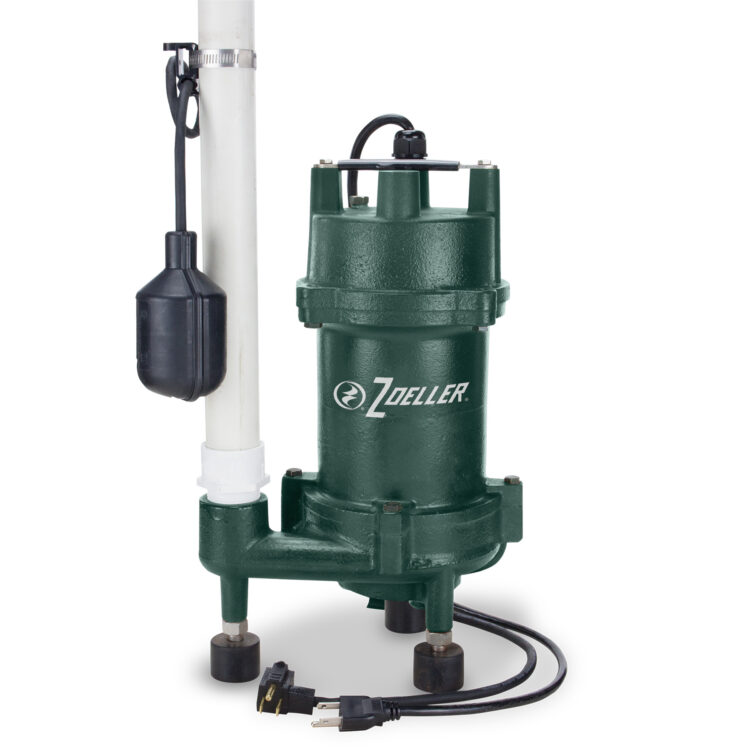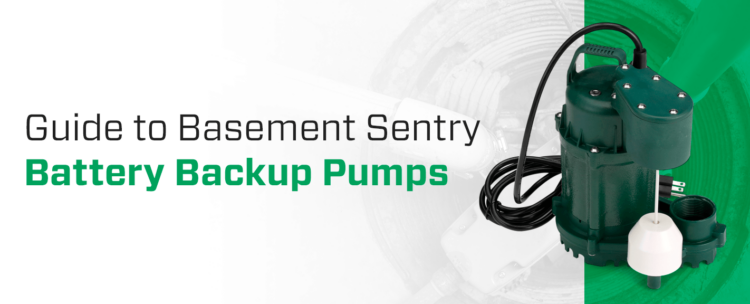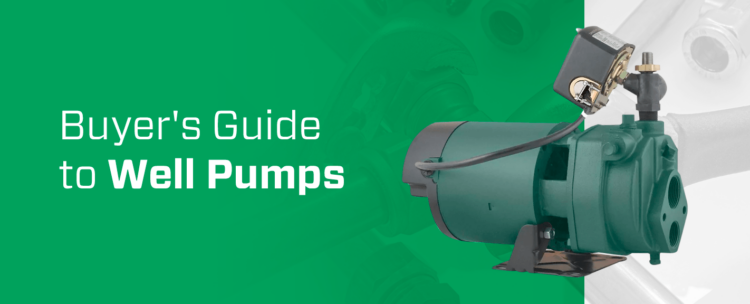Septic tank systems offer many benefits to homeowners, from cost savings to dependable, long-lasting performance. They tend to be more common in rural areas outside a city-operated wastewater system, but some houses in urban areas may also have an on-site septic system.
Whether you’ve just purchased a home with a septic tank or want to install one on your property, this guide will help you learn how to take care of your system so you can enjoy seamless wastewater management. We will cover what a residential septic system is, how it works, its pros and cons and how to maintain it to ensure effective and efficient operation.
Types of Residential Septic Tank Systems
A conventional or soil-based septic tank system is made out of three parts:
- A septic tank
- Drain lines
- A drainfield, also known as a soil treatment area or a leach field
These systems partially treat wastewater and release it through perforated pipes into a soil and gravel drainfield for further treatment. A conventional septic tank system may also have a distribution box to send wastewater down different lines throughout the drainfield.
While most single-family homes have a conventional septic tank system, there are many alternative septic tank systems that may work better for various soil types, different climates, proximity to water bodies or smaller property sizes. Some alternative systems may use pumps or gravity to discharge wastewater. Others may disperse the water into sand or organic matter rather than soil, or they may evaporate the wastewater completely instead of filtering it through any material.
Since conventional septic systems and alternatives similar to them are the most common, those are the systems we will focus on for the rest of this article. If you have an alternative septic tank system, be aware that its operation, benefits, considerations and maintenance requirements may differ slightly from a conventional septic system.
How a Septic System Works
Conventional septic tank systems allow you to manage your wastewater on your own property. These systems obtain, treat and disperse wastewater from your house through the following process.
1. Wastewater Drains Into the Septic Tank

When you use a sink, run a load of laundry or flush your toilet, the wastewater from these appliances drains from your house through one main drainage pipe into your septic tank. A reliable sewage grinder pump between your home and the septic tank can help grind up solids to ensure wastewater travels smoothly and seamlessly to the septic tank.
Septic tanks are water-tight containers buried two to four feet under the ground. They are usually made of concrete, though some may be made out of other materials like fiberglass, poly plastic or steel. Tank sizes vary depending on the size of the building and its wastewater management needs
2. Wastewater Separates From Sludge and Scum
When wastewater enters the septic tank, it sits and slowly separates into three layers. Solids will sink and form a sludge layer. Oil, grease and other light materials will rise and create a scum layer. As the particles rise or sink, the cleaned wastewater is left in the middle.
When new water enters the tank, an equivalent water volume is pushed out through the drain lines and into the drainfield. The septic tank’s design keeps the sludge and scum layers inside of the tank while allowing the cleaned wastewater to exit through the pipes.
3. Pretreated Wastewater Enters the Drainfield
The drainfield is made up of porous, unsaturated soil and gravel. Some septic systems have a distribution box between the tank and the drainfield to distribute wastewater evenly throughout the drainfield.
Perforated pipes discharge wastewater into the gravel. The water will trickle through the gravel into the soil, which accepts, filters and disperse the water. The soil is also filled with plant life, bacteria, fungi and creatures that help release nutrients and other compounds from the wastewater to clean it before it drains to the groundwater.
Advantages of a Septic Tank System

A well-maintained septic system can benefit your home, family and local environment in many ways. These systems are:
- Cost-effective: Installing a septic system can be less expensive than installing new sewage pipes, and you won’t have to pay monthly fees for a city-operated sewage system. A septic system can also increase your family’s awareness about water usage habits, leading to better conservation and cost savings.
- Durable: Septic tanks are built to last, making them a valuable long-term investment. They rarely need to be replaced, and upkeep to promote optimal performance is minimal.
- Environmentally friendly: A septic system helps minimize groundwater contamination, encourages the local ecosystem and uses drainfields as natural filters instead of chemicals. They can teach your family about how much water you use and encourage you to practice better conservation habits.
Essential Factors to Consider With Septic Systems
While septic tank systems offer many benefits, you should also be aware of important factors associated with owning and managing your own wastewater system. These factors include:
- Maintenance requirements: You are responsible for keeping the septic system in good condition rather than the city. You will need to account for maintenance needs and expenses to ensure continual effective operation.
- Damage from natural disasters: If the drainfield becomes oversaturated during a flood or a pipe bursts during an earthquake, your septic tank system can cause many messy and potentially dangerous problems. It will be your responsibility to prepare for and respond to damage from natural disasters.
- Wastewater capacity: Septic systems can only handle a certain amount of water, depending on the size of the tank. You must be aware of your water usage habits and practice water conservation to avoid overloading the system.
Understanding Your Septic Tank System
Whether your property has a septic system or you would like to install one, you should learn all that you can about your system to ensure it operates as it should. These important questions will help you get started.
How Do You Know if You Have a Septic System?
Check the paperwork that came with your house to see if there is a map of the tank and drainfield. If there is no documentation, you can see if your city or municipality charges for sewer services. If they do, you are on the sewer system rather than a septic tank system.
Your local health department may also have a map of your septic system since they need to inspect the installation or modification of the septic tank. They can also recommend professionals to assist in determining if you are on a septic or sewer system.
How Do You Locate Your Septic Tank System?
If no map is available but you know your house is on a septic system, there are a few clues you may be able to follow to find your system:
- Drier grass may indicate the shallow soil over the septic tank, while greener grass may indicate where the drainfield is.
- Wastewater pipes in a crawlspace or basement may lead you toward your septic tank.
- Poking a long metal pole into the ground can help you locate the tank, though you will need to be cautious around gas and water lines.
These methods may or may not work for your property. A certified professional can reliably locate your septic system if you are unsure of where to look.
How Do You Install or Replace a Septic Tank System?
Installing a septic system can be a complex process. For new septic systems, you will need to start with a site survey to confirm that the area is large enough and far away from any wells. You will also need to do a soil test to confirm that the soil type, absorption rate and topography will work for a septic system.
The installation process requires:
- Permits and approval from the local health department
- Careful excavation for the drainfield and septic tank pit
- Correct septic tank size selection
A reputable contractor can help you manage each step of the installation process to install your new or replacement septic system correctly for long-lasting performance. Septic system installation often requires heavy equipment and specialized tools to excavate the area and place the septic tank. A professional can also guide you in selecting the right tank size for your house.
How to Maintain a Septic System
Septic tank systems can efficiently, quietly and effectively manage your wastewater so you can enjoy peace of mind — as long as they receive proper maintenance. Regular inspections and maintenance can prolong your septic system’s life span and ensure it performs as you need to keep your family, community and local environment safe.
Understand Your System
Learn all that you can about your septic system. Know its parameters and how much water it can handle. This information is critical to know if you decide to add on to your home or if your usage is higher than what the tank size can manage. Knowing the tank’s size will also tell you how often it needs to be pumped for effective operation.
You will also want to discover when the system was installed. Septic tanks have a life span of 20 to 40 years, so knowing their age will enable you to prepare for replacement and maintenance needs. Review inspection history records to see what previous problems have occurred and what you need to watch out for.
Schedule Professional Inspections and Service

While bacteria and other microbes may help decompose the sludge layer in the septic tank, they cannot break down all of the material. Septic tanks need to be pumped every three to five years to remove the remaining sludge and scum layers.
Professionals can identify and rectify potential issues before they escalate into significant problems. They can check pipe integrity and other septic tank aspects to repair leaks and clogs and improve drainage efficiency. Regular inspections and service can prolong your septic tank system’s life span.
Know the Signs of a Failing Septic System
A failing septic system can be dangerous for your family, community and surrounding environment, which is why it is vital to address problems as soon as possible. Oversaturated drainfields, clogged pipes, broken connections and other septic tank issues can cause serious health risks and property damage, so be sure to watch for signs such as:
- Wet or mushy soil
- Bacteria in well water
- Gray standing water
- Slow-draining sinks and toilets
- Unusual sounds and smells coming from the plumbing or the yard
Maintain the Landscaping Above the Septic System
While the septic tank and drainfield may be underground, the area above them should be treated with care. Vehicles, storage sheds, swimming pools and other large vehicles, items or structures can damage the system and compress the soil, making the drainfield less effective. Keep the area clear and follow appropriate landscaping techniques to protect your system
Groundcovers, grass and other shallow-rooted, drought-tolerant plants are ideal for the ground above your septic system. They can help remove excess moisture and nutrients from the soil while staying far away from the drain lines. Tree and shrub roots can grow too close to the system and interfere with its performance, leading to clogs and damage. It is also not recommended to grow a vegetable garden over the drainfield.
Conserve Water
In addition to benefiting the environment, conserving water can also benefit your septic tank system. All the water you use in your house will end up in your septic system, so implement wise water habits by repairing leaky faucets and minimizing water use to avoid overloading the system. Be mindful of how saturated your drainfield is. If it is a rainy day, the drainfield will absorb less water from the septic tank than usual.
Wastewater needs enough time to sit in the tank for the sludge and scum to separate out before the water is pushed into the drainfield. If the water moves through the tank too quickly, it may contaminate the drainfield and lead to various health concerns. Polluted wastewater could also leave particles and oils in the pipes, leading to clogs. Conserving water will help give wastewater enough time within the tank for treatment.
Watch What You Put Down the Drain
Many things should not go down the drain — for both septic and sewer systems. Obstructions can cause pipes to leak or sewage to overflow, and certain chemicals can harm the beneficial microorganisms needed to break down sludge. Avoid washing or flushing these items down your drain or toilet:
- Hygiene products
- Grease
- Cooking oil
- Hair
- Paper towels
- Paint
- Dental floss
- Cat litter
- Household chemicals
Also, be sure to avoid using any additives. While they may be advertised as beneficial, some can cause damage by clogging drain lines or corroding the septic tank. Wastewater contains all the necessary bacteria and microbes to facilitate the sludge deterioration process.
Enhance Your Septic System With a Sewage Grinder Pump
Your septic system is critical to the safety and health of your family and local ecosystem. With a dependable sewage grinder pump working alongside your septic system, you can trust your system to manage wastewater from your house efficiently and effectively.
At Zoeller, we pride ourselves on offering the rugged and durable products you need to improve your home. Our sewage grinder pumps provide reliable performance, enabling you to enjoy a more efficient, environmentally friendly wastewater management system. Contact us online to learn more about our products, or find a location near you to purchase a pump.





